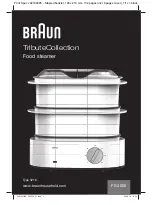
10
CANNING BASICS
Introduction
The key to successful canning is to understand the acidity and spoilage factor of
the food you wish to can, as well as the acceptable canning methods to process
those foods.
There are invisible microorganisms present all around us. Fruits, vegetables,
and meat contain these microorganisms naturally and yet they are not a problem
unless food is left to sit for extended periods of time, causing food spoilage.
This is nature’s way of telling us when food is no longer fit to eat.
There are four basic agents of food spoilage: enzymes, mold, yeast, and
bacteria. Canning interrupts the natural spoilage cycle so food can be preserved
safely. Molds, yeast, and enzymes are destroyed at temperatures below 100°C
(212°F), the temperature at which water boils (except in mountainous regions).
Therefore, boiling water processing is sufficient to destroy those agents. Foods
naturally high in acid and acidified foods having a pH of 4.6 or less may be
safely processed using the boiling water method.
Step-by-step instructions
for the boiling water method begin on page 47.
Bacteria, however, are not as easily destroyed. The bacteria
Clostridium
botulinum
produces a spore that makes a poisonous toxin which causes
botulism. This spore is not destroyed at 100°C (212°F).
In addition, the bacteria thrive on low-acid foods in the absence of air.
According to the USDA, pressure canning is the only safe method of
processing low-acid foods (vegetables, meats, poultry, fish, and seafood).
In pressure canning, some of the water in the pressure canner is converted to
steam, which creates pressure within the canner.
As the pressure increases, the temperature increases: 34 kPa (5 psi) is about
109°C (228°F); 69 kPa (10 psi) is about 115°C (240°F); 103 kPa (15 psi) is
about 121°C (250°F). This pressurized heat destroys the potentially harmful
bacterial spores.
Step-by-step instructions for the pressure canning method
begin on page 13.
As the jars cool after processing (by either method: boiling water or pressure
canning), a vacuum is formed and seals the food within the jars, preventing any
new microorganisms from entering and spoiling the foods.
01785 4033-017A CUL English weighted gauge induction canner.indd 10
01785 4033-017A CUL English weighted gauge induction canner.indd 10
12/13/19 10:34 AM
12/13/19 10:34 AM











































